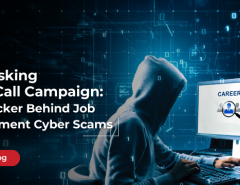Security is a habit. Like most human habit, it requires years of practice to form. The exception to this is the bad habits. Cybersecurity experts know that bad habits are intrinsically easy to slip into. It’s just easier for employees to turn off their firewall to stop all the incessant alerts. Or put an easy password so that is easy to remember. Even give their data to any website which asks for it.
Once these bad habits are formed, they are difficult to break and could be horrendous for an organization’s security. Ultimately, cybersecurity revolves around human beings. If there is a culture of poor security practices, that organization is looking at a place where they are extremely vulnerable to breaches or any forms of other attack.
Here are five poor security practices which many organizations have been guilty of doing:
1. Not implementing access control policies
Access control is an issue almost every organization struggles with. They may have the strongest firewalls but it can be sometimes of no use if every user in the organization has access to everything. That makes the company very susceptible to insider breaches. That also means, if a hacker manages to gain control of a system with access to the network, it is a bonanza for them.
2. Not employing IPS/IDS systems
Intrusion Detection and Prevention Systems (IDS/IPS) work a little differently from other cybersecurity solutions. These solutions provide monitoring and tracking for analysis. This requires a little effort on the part of network administrators but that is worth it. This data can throw up valuable insights showing detailed activity of intrusions which allow to better frame a security policy.
Read more: Benefits of having Intrusion Prevention/Detection System in your enterprise
3. Not having a security policy
On this topic, it’s essential to have a security policy. It may sound like a no-brainer, but many organizations still haven’t woken up to the fact. A cybersecurity policy is as important a piece of document as any other policy in the organization and needs to be enforced as seriously. The cybersecurity policy must be comprehensive, contain dos-and-don’ts with every employee familiar with it.
4. Not updating the software you use
In 2017, the WannaCry ransomware attack grabbed headlines all around the world. It exploited a security hole in Windows XP. Yes, that’s right – Windows XP, an operating system which is now almost two decades old and which Microsoft itself stopped supporting in 2014. In fact, it was found that 7% of PCs all across the world still use this outdated operating system. This example sums up the extreme danger of not updating the software a business uses. Hackers are more than aware of the lethargy in big businesses and will exploit the same brutally.
5. Not understanding the risk of social engineering
Sometimes, an organization can go completely the other way and believe cybersecurity is a technology issue. It absolutely is not – because, at its foremost, it is a human issue. An organization’s employees can be its biggest asset or liability. Unless they are also taken along the cybersecurity ride, it will be difficult for them to identify breaches, plug loopholes or not get taken in by phishing mails. For this, regular awareness and training is important.
Seqrite’s Unified Threat Management provides a one-stop solution for many of the problems identified above. It acts as a first line of defense providing IT security management, a safe working environment, high productivity, regulatory compliance in a cost-effective bundled solution.
As an IT security partner for your business, Seqrite provides comprehensive security from advanced cyber threats. To know more




